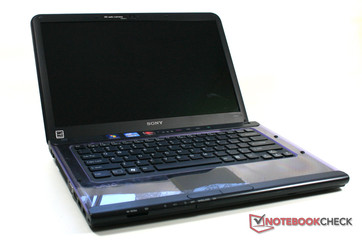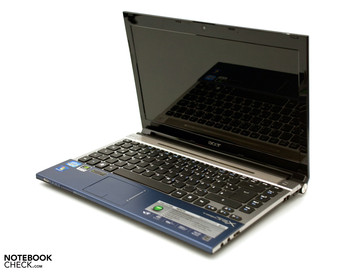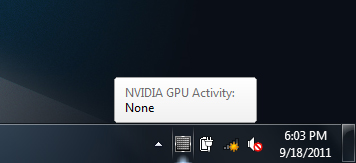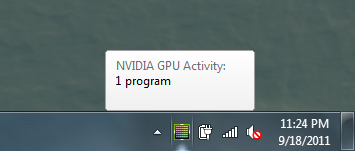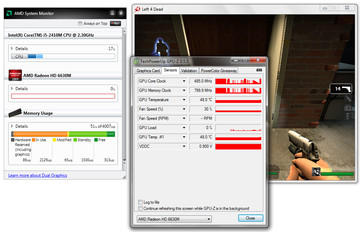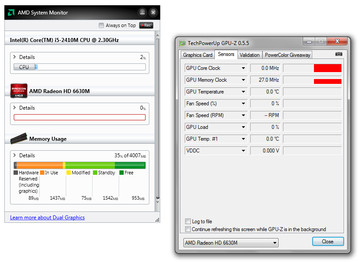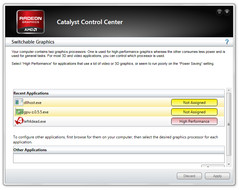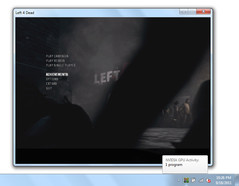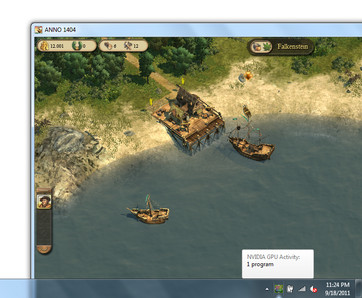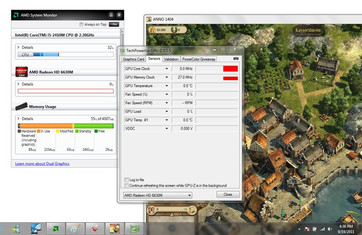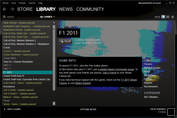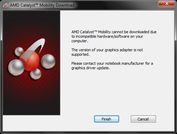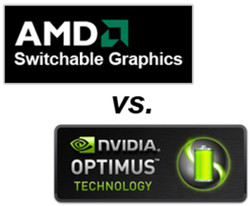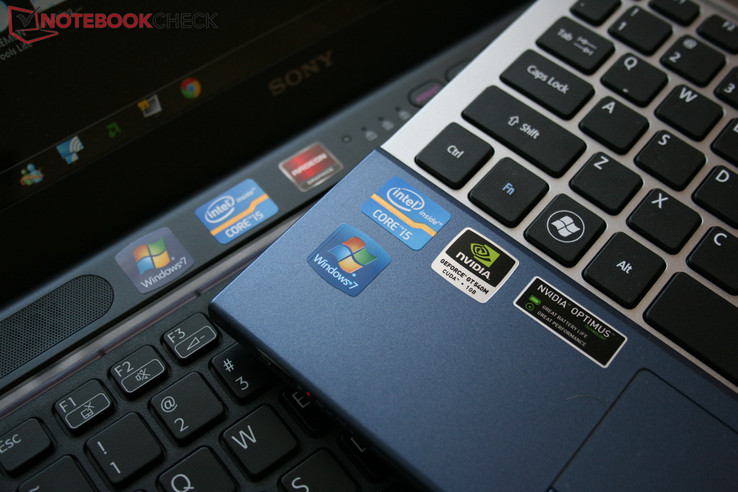AMD Dynamic Switchable Graphics vs. Nvidia Optimus
Ever since the introduction of mobile electronics there has been a divergence between performance and battery life. The rule of thumb is relatively simple - if more performance is required from a notebook, then the battery life becomes an increasing concern. Along with numerous power-saving features, such as Speedstep or Turbo-Boost for processors, a new feature for graphics chips has become prominent over the last several years - the so called hybrid solution, which is the combination of a reduced performance but energy efficient processor and graphics chip, and a high performance dedicated graphics card. The basic principle behind this: The graphics card is active in cases when the performance is required, while the CPU and graphics chip provide graphics processing for the remaining time. The goal: Lowest possible power consumption during times of little processing load, and maximum performance for relevant applications.
GPU manufacturer Nvidia, who provided the first fully automatic GPU switching solution in the form of the Optimus solution, and competitor AMD with its 'Dynamic Switchable Graphics' now offer relevant solutions to enable consumers to easily have the appropriate graphics option activated at any one time.
For the sake of fairness it is necessary to mention that the following review was carried out with notebooks provided by Nvidia, although the models are readily available on the market, and were checked for currently available up to date drivers.
In addition, this comparison was made taking into consideration prior knowledge obtained from individual reviews of Nvidia Optimus and AMD Switchable Graphics with various other notebooks that are available.
The following comparison is intended to highlight how the two solutions present themselves to users during daily use and where the strengths and weaknesses of the two technologies lie.
The Reviewed Notebooks
We are already familiar with the Acer Aspire Timeline 3830TG from our comprehensive review. The 3830TG combines a powerful Intel Core-i CPU (including Intel HD Graphics 3000 via Optimus) with the Nvidia GeForce GT 540M mid-range graphics card, albeit within an especially thin 13 inch case. As a result, the notebook CPU can suffer from CPU throttling under a high load. This shouldn't have any effect on our Optimus functionality test, however.
The search for a representative of AMD's Dynamic Switchable Graphics is currently still a bit more difficult. Only Dell and HP provide relevantly equipped models in this range. Finally we were provided with a US model in the form of the Sony Vaio VPC-CA290x (Intel Core-i5 2410M, AMD HD 6330M). In parallel with this we also have information obtained from a comprehensive review of the Dell Vostro 3550 for assessing the AMD solution. The Dell Vostro is also available in Europe with this configuration.
The Technology
Switchable isn't always switchable - but almost. In principle, the presentable images are transferred from the dedicated graphics card into the output memory of the graphics chip integrated into the CPU with both variants. Thanks to this the graphics solution can present images without interruption while switching between the available graphics chips, and in the case of Nvidia Optimus the CPU graphics can even be completely switched off.
While Nvidia isn't keeping any secrets when it comes to the applied technology, AMD is more hesitant to share. Details regarding the technological process are limited to technical experts, and our requests for information from AMD relating to this remain unanswered. Detailed information about the Nvidia Optimus technology can be found in this test.
What's Active?
Just as great value is placed on the visualization of the currently active engine in a hybrid automobile, this should also be the case with notebooks in our opinion.
The Optimus representative Acer Aspire Timeline 3830T shows a small icon in the taskbar, which gives an indication of the active graphics option when hovering the mouse pointer over it. This is however not visible by default, as was also the case with many other Optimus devices, and had to be activated in the Nvidia control panel.
We weren't able to find any indication of which graphics option was in use with the Sony Vaio VPC-CA29. There is no relevant icon in the taskbar, and Catalyst Control Center (CCC) is also not able to indicate which graphics options are currently in use. Even the AMD System Monitor tool we installed still leaves us with unanswered questions.
The displayed 0% under processing load gives us reason to believe that the dedicated graphics card is deactivated, but we can't be absolutely certain. GPU-Z shows a memory speed of 27 MHz in an idle state for the HD 6630M graphics card, which increases to 800 MHz with a high load. Meanwhile, the core clock speed is shown as 0 MHz versus 485 MHz with a high load. According to AMD, the graphics card is also switched off completely when it is not in use. Nvidia elaborates this claim, however, by stating that the AMD graphics bus remains active according to their knowledge, and thus requires 500mW more power than the Optimus solution. Unfortunately, we were not able to verify either claim.
Practical Test
How the graphics switching of both systems works during daily use was determined by us with the use of a series of games and applications. Here are our results.
Left 4 Dead
We chose a slightly out of date first person shooter for our first test: Left 4 Dead. Our Sony notebook started without problems, and the observed performance was also in line with expectations. Which GPU is now being used still remains a mystery though. AMD's System Monitor shows obvious spikes in GPU activity, which is indicative of an active HD 6630M. After closing L4D we found an entry in the Catalyst Control Center for 'High Performance' for Left 4 Dead. Conclusion: Game recognized, correct GPU automatically selected. In order to determine which GPU is active when an application is started, it is therefore necessary to start CCC, in order to determine the settings. This only works after starting a program though.
Our Acer Aspire 3830T with Nvidia Optimus also recognized Left 4 Dead when it was launched for the first time. How does the user know this? At the time of launch, the icon in the taskbar changes. Although in cases when the game application is in full screen mode there may only be a split second to notice this, but changing to a windowed view allows a closer look at the icon for certainty.
Anno 1404
The next test was carried out with Anno 1404, which is not only significantly newer than L4D, but also demands a lot more from the graphics hardware. Both systems started without problems, and the color change of the tray icon was briefly visible with the Acer Optimus notebook - Optimus in action - as the GT 540M takes over for Anno 1404.
The process was somewhat more cumbersome with the Sony AMD Switchable Graphics notebook. We started the game, and selected subjectively smooth graphics settings. Switching to the desktop doesn't provide any clarity. CCC lists Anno as 'Not Assigned', and hence not recognized, and GPU-Z as well as AMD System Monitor don't show any sign of GPU activity from the HD 6630M. Thus, the assumption that the game is only running with the integrated graphics becomes logical, whereby we were only able to determine this following a cumbersome process (AMD System Monitor, GPU-Z). An automatic indication from CCC concerning the graphics processor wasn't available.
The measured performance also supports the idea that the AMD GPU is inactive: 39 frames per second on average with low graphics settings (1024x768, low). Intel's HD Graphics 3000 is listed with 46 fps on average in our database with the same settings. We wanted to manually configure activation of the HD 6630M in CCC for Anno, but Anno surprisingly wasn't listed among the last 4 active programs. Via 'Other Applications' we looked for the relevant .exe file on the hard drive, assigned 'High Performance', and started Anno again. Result: The performance increased significantly, and the benchmark test also confirmed the improvement: 106.4 fps on average due to the now-active HD 6630M GPU. An improvement that could easily be missed though, if the performance of an HD 6630M wasn't known, or additional tools such as CPU-Z or AMD System Monitor weren't used to determine that the AMD GPU was not initially active.
A subtle indication in the Catalyst Control Center could easily help users in this respect, but is unfortunately not available in our Sony notebook, even with a brand new fresh system. In this respect, it is also worth mentioning that a window always popped up during our AMD Dynamic Switchable Graphics review with the Dell Vostro 3550, in order to request the preferred GPU when an unknown application is started. Even though this can become annoying over time, selecting the 'do not ask again' option would likely not be a prudent choice, since you can no longer be sure which graphics processor is being used. Our tests with Anno 1404 is a great example, as we had to resort to third-party programs in order to identify if the dedicated GPU was active or not. In general, the integrated GPU is used by default in cases when the application is not recognized.
Following a restart of the notebook the AMD GPU was automatically selected for Anno again, indicating that the settings were saved. In general, there still appears to be a kind of heuristic process involved, since some games (predominantly older ones) are recognized while others are not.
Other Games and Experiences
We decided to look further into the issue, and tested a series of current games.
Fifa 12 Demo: Is recognized by our Optimus notebook immediately and runs smoothly with 30-40 fps using 1366x760 pixels, high. Sony's Vaio CA290x doesn't recognize Fifa 12 straight away, and we had to make the necessary settings manually in the CCC. With 66 fps on average the game runs pleasantly smoothly.
Warhammer 40k: Space Marine: Is also recognized as a task for the GT 540M, and runs smoothly with 42 fps using 1366x768, high. Dynamic Switchable Graphics also requires a manual selection of the AMD HD 6630M GPU (as with all the other following games). In addition high and ultra presents could not be pre-selected.
Supreme Commander 2: Recognized and runs without problems, AMD has to be assigned, but then works without problems.
Shogun 2: Is recognized by Optimus, but doesn't start straight away on an external monitor with the AMD notebook when the HD 6630M is permanently active.
Gattling Gears: We installed the casual shooter via Origin, and this was the first sample that wasn't recognized by Optimus. The shooter has low graphics demands though, and runs smoothly enough on the integrated HD Graphics 3000 for beginners. The AMD solution behaved the same way in the test.
F1 2011: Was already recognized by Optimus on the day of the release. With AMD, the game didn't start with the preset graphics card though, although after manually assigning the AMD graphics card it worked perfectly.
Battlefield 3: The Acer notebook allowed the 285.38 beta driver for BF3 to be installed. During our test we reached a playable 27 fps using 1366x768, medium. Battlefield 3 was hardly playable with the Sony with 18 fps (default settings - 1366x768, medium). Only after reducing the resolution was the game smoothly playable. The newest Catalyst beta driver, hoever, unfortunately couldn't be used (contrary to Optimus).
Dirt 3: Our AMD notebook showed a black pillar on the right side of the screen (with integrated display), and the perceived performance was only on the HD Graphics 3000 level - despite eventually using the 6630M (according to System Monitor). This is especially disappointing since Dirt 3 is a flagship game for AMD. Following another start we were only able to observe a pattern on the display (full screen, windowed worked) - the 6630M was manually activated during this. Optimus worked with Dirt 3 without problems, and recognized the game automatically.
Deus Ex: Deus Ex was also started using the integrated graphics as the automatic graphics selection. With a manually activated graphics card, it eventually worked without problems. Optimus didn't show any problems as usual.
Other Issues
Besides the observations mentioned above, the Optimus solution also has the advantage that the Intel driver can be updated separately. Fifa 12 for example didn't start with the default Intel driver, but did following an update to version 2509. In contrast, the HD 3000 graphics driver in our AMD-powered Sony notebook couldn't be updated separately. Thus, our test notebook only used the now out of date and slower 8.15.10.2321 driver.
OpenGL only worked with the AMD Dynamic Switchable Graphics with the AMD graphics card permanently activated, and not with automatic switching. The included driver (and only one available) for our Sony test notebook crashed once during the switch. In another instance, the running applications were only presented with 16 colors following the switch (Steam). The manual changing also takes a few seconds, and after some display flickering, running 3D applications have to be closed - the same way as with older MUX based switching solutions.
In addition to this, there were also a few bugs with the installed Catalyst driver with our Sony test notebook. The list of previous games for example cannot be kept open (tested with Warhammer: Space Marines), otherwise this is empty when reopened. Additionally, we also noticed a strong flickering on the integrated display when an external display was connected. Graphical errors would pop up on the external display at the same time. When the dedicated AMD graphics card was permanently active, there were countless green pixels visible in 3D applications (e.g. 3DMark Vantage, Cinebench 11).
The dedicated AMD graphics card can be deactivated the same way as with Optimus in the device manager, but since a special driver is used (and not two individual ones as with Optimus), the integrated Intel solution appears to run without driver support in this case.
Further observations and characteristics relating to the two solutions can be found in our previous individual reviews for Optimus solution from Nvidia and AMD Dynamic Switchable Graphics - with other available tested notebooks.
Unigine Heaven OpenGL Benchmark / Furmark
Neither Unigine Heaven nor Furmark can be run without errors in the switchable mode. Unigine, for example, starts with the error message that the resolution cannot be set. Furmark is prevented from starting due to the lack of OpenGL support. This can only be prevented by forcing the GPU to start in the BIOS when booting up, but in doing so would forgo all the energy-saving advantages of switchable graphics.
During the course of our tests we also noticed that some applications can't be found in the Catalyst Control Center (CCC) after they have been started. A following manual allocation of the .exe file, such as with Anno 1404, is comparatively cumbersome.
HD Video Playback
Nvidia Optimus isn't triggered with normal local videos (for example, H.264 or VC-1). With YouTube flash videos (also tested with Vimeo and Gamestar videos), the dedicated GPU becomes activated with the current stable drivers. Flash animations, like most advertising banners, don't activate the dedicated graphics.
Watching a 360p YouTube video with the Acer Aspire Timeline leads to an approximate CPU load of 11% with an active GeForce GT 540M, and about 14% CPU load with the integrated Intel HD Graphics 3000 doing the processing. Thanks to the performance improvement of the integrated graphics option, the advantage of the dedicated graphics card remains within limits.
A Full HD YouTube clip (Avatar 1080p trailer) caused a 9% CPU load with activated Nvidia graphics card (slight variations) versus 22% with the integrated Intel graphics. In this case, the advantage of the dedicated Nvidia graphics card may be higher, but whether this justifies the higher power consumption by the Nvidia GPU is questionable.
Using the new beta drivers for Optimus (date 06.10.2011), this behavior has notably changed. Flash videos don't cause a switch to the dedicated graphics card any longer. This may not be ideal for older Optimus notebooks (with GMA 4500MHD graphics chipset), but should save power with newer devices.
AMD Dynamic Switchable Graphics automatically selects the dedicated graphics card for the playback of YouTube videos in Internet Explorer, and decodes the videos with a CPU load of around 14% with the i5-2410M and AMD Radeon HD 6630M in the Sony Vaio VPCCA290x. Problem: The CCC separates the allocation of graphics cards according to the respective active program, hence Internet Explorer would be running continuously using the dedicated AMD graphics card. This can of course lead to disadvantages with respect to power consumption and battery life, even if there aren't any high resolution videos being played back.
Power Consumption
We measured the average power consumption of both notebooks with the graphics card deactivated and an external monitor attached via HDMI. The Sony Vaio required 7.1-10.1W (usually 7.5W), while the Acer Aspire Timeline used 5.8-11.5W (usually 6-6.9W). A direct comparison of both values is not possible due to the different platforms, despite the identical i5-2410M CPU.
We were only able to measure a difference with the GPU active in an idle state with the Sony Vaio (AMD 6630M), which was at 10.7-12.8W (usually 10.9W) and thus noticeably higher than during the idle state with the integrated graphics. With Optimus notebooks, the deactivation of the integrated CPU graphics is only possible with some models. Unfortunately, our tested Acer Aspire 3820TG did not allow the integrated graphics to be disabled.
We started Furmark to activate the GT 540M in the Acer Aspire, but didn't carry out any activity. Thus, the GPU stays in an idle state with a clock speed of 50 MHz. We measured 8.8-9W in this case, which was also noticeably more than with the graphics card deactivated.
AMD, as well as Nvidia, are definitely able to save power during use without a processing load thanks to GPU switching. According to Nvidia, the AMD solution has to supply the PCIe bus with about 500mW of constant power. The GPU itself is apparently completely switched off when not in use, however, according to AMD. We weren't able to definitively confirm either of these claims.
Verdict
Nvidia, as well as AMD, have a working solution in place, in the form of Optimus and Dynamic Switchable Graphics. Both allow the graphics processing of current Intel CPUs to be combined with additional higher performance graphics cards, without users having to incur any excessive hassle - in theory. Nevertheless, in detail the two solutions differ significantly from each other.
The main problem with the AMD solution in our opinion are the currently unavailable driver updates. The current Catalyst version doesn't seem to support switchable graphics, and AMD points to the device manufacturers for driver updates. Their interest in providing updates to drivers consistently also remains within limits. Usually drivers are only released when there is a serious problem with the current version.
The second point is the missing information about the currently active GPU. Especially buyers who are not very technical are at risk of unwittingly missing out on the additional performance provided by the dedicated graphics card. Switchable graphics should be intended precisely for these customers though. Regardless of what's inside the notebook, it should be operating the best possible way, without having to research about how to get the expected performance. This only seems to be provided in the case of Nvidia Optimus at present thanks to the consistently updated Verde drivers and gaming profiles.
Furthermore, there were a few smaller details which we were able to observe with our Sony test notebook using AMD graphics. The available and installed driver disappointed us with graphics errors when driving an external display, missing OpenGL support during automatic switching mode, and several errors during games (e.g. with Dirt 3 and Super Street Fighter).
On the other hand Optimus is also not completely perfect, and could improve in some areas of usability. The manual switching between the integrated and dedicated graphics for example, which is possible with AMD, would be useful for skeptical users. The activity indication provided by the optional taskbar icon could also be improved by a hardware indication, such as a status LED on the device (already provided by some Clevo Barebones), which would make it easier to notice and eliminate any doubts.
Altogether, we currently see Nvidia's Optimus as the clear winner, especially for less knowledgeable users. The AMD solution can only be recommended to gamers as soon as the current problems are fixed and the drivers can be updated from AMDs website.





